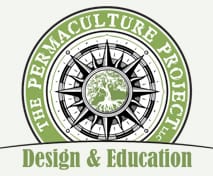II. METHODS OF DESIGN: Design Strategies and Techniques
Learning Objectives: In this unit you will learn how to make initial observations in the landscape and, through a series of activities (i.e. analysis, data overlay, zoning, etc.), learn how to apply observations to a basic design. You will learn to read maps, delineate a basic zone and sector diagram, utilize methodologies such as relative location, efficient energy planning, diversity, etc. when thinking through their initial drawings. You will make their first attempt at putting down a basic design on paper.
Permaculture is about whole systems, not about separate components. Because each element in a landscape or the built environment affects every other element at a site, we believe that a complete, comprehensive assessment is tantamount to develop healthy, productive, energy efficient relationships between elements for the benefit of everyone involved in day to day operations. By paying attention to all the details: topography, climate, water, wind, sun, activity nodes and corridors, buildings, machinery and tools, the waste stream, plants and animals, it enables us to make best use of what is already on the ground, and what we intend to put there. With a dynamic interaction of elements in process, and an assessment of both spatial and temporal attributes, organized around sound ecological principles, we can maximize yields and balance the landscape. In order to accomplish this we conduct a three phase process as follows:
Phase I: Initial discussion, protocol, history, institutional analysis, vision, mission, geopolitical assessment, bioregional delineation, values, objectives, needs, wants, budgets.
Phase II: On site assessment, abiotic and biotic factors, physical, biological and cultural attributes, landform, built environment, energy sources, present and historical land use features, activity nodes and corridors, land tenure, critical habitat foundations, soil composition, vegetation composition and cover, succesional pattern and plant productivity, wildlife corridors, water resources, climatological factors, the waste stream.
Phase III: Recommendations based on assessment and needs, suitability analysis, the whys and wherefores of transitioning into a “green” environment.
Phase IV: Implementation
Phase V: Management and Maintenance
[youtube=http://www.youtube.com/watch?v=2Lv3R4HrY6w&hl=en_US&fs=1&]
